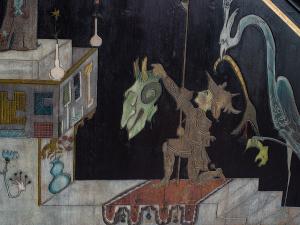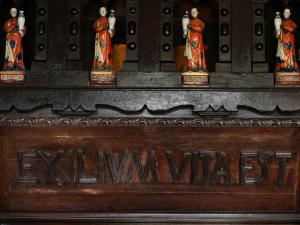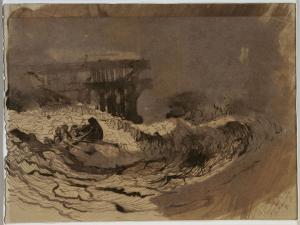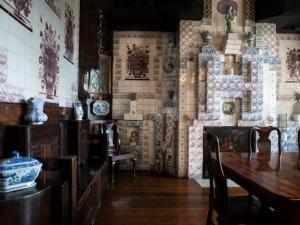A Writer's House
What Victor Hugo wrote at Hauteville House
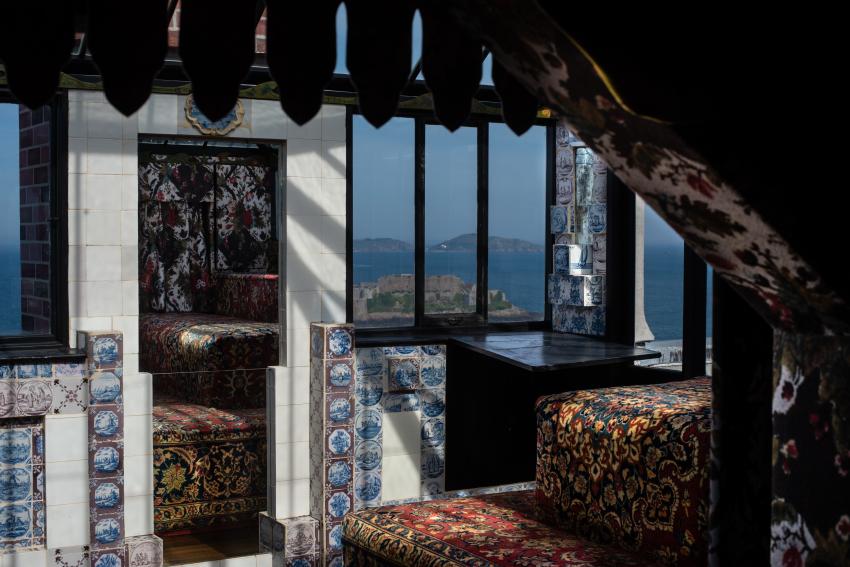
« I took the new crystal inkwell bought in Paris, uncorked a bottle of brand new ink, filled the new inkwell, took a ream of paper bought especially for this book, picked up a good old quill and started to write the first page. ».
Hauteville House is a writer’s house that has seen the birth of many of Victor Hugo's masterpieces. Yet Victor Hugo changed his writing space several times. He originally intended the Oak Gallery – which he called “my apartment” – to be both his bedroom and study. However, he never used it, preferring to settle in the attic, which was to be his private floor. At first he wrote in the attic room in the centre of the roof, or even in his bedroom. From 1862 onwards, the look-out that he had just built on the roof as an extension of his first study became his office in the sky, overlooking the sea.
To get a feel for the spirit of the place, it is worth remembering all the works that were written at Hauteville House.
During Victor Hugo's time here, he wrote numerous political proclamations that were published, following those written in Jersey, in Words and Deeds, “During Exile”.
Victor Hugo took several days to produce each of his poems. Starting with a general theme for the collection, he compiled it by sometimes referring to his notes or digging out old poems. So his collections bring together poems written at different times and in different places. As a result, many of the poems written at Hauteville House were only published in the posthumous collections, Les Quatre vents de l’esprit [The Four Winds of the Spirit] (1881), Toute la lyre [The Whole Lyre] (1888, 1889 et 1897) and Dernière gerbe [The Last Sheaf] (1902),while some that remained in fragmentary form were published in Océan [Ocean]. However, the main collection of poems that Victor Hugo worked on when he moved to Hauteville House was The Legend of the Ages the first series of which appeared in 1859. Yet a whole series of philosophical and religious poems gravitated around The Legend of the Ages, such as L’Âne [The Donkey] (published in 1880), La Pitié suprême [The Pity of Angels] (1879) or works which remained unfinished and were publish posthumously, like La Fin de Satan [The End Of Satan] (1886) or Dieu [God] (1891) which completed Religions et religion [Religions and Religion] (written in 1868, 1870 and 1872 and published in 1880). However, in a completely different vein, most of Les Chansons des rues et des bois [Songs of the Streets and Woods], which appeared in 1865, was also written at Hauteville House.
Although Victor Hugo had not published a novel since Claude Gueux, in 1834, he returned to the genre on 28 April 1860 when he picked up the manuscript of Misères, that he had written between 1845 and 1848. In his first study (now known as the look-out’s antechamber), Hugo spent the next few years rereading, reflecting and writing what was to become Les Misérables until the novel was published in 1862. In the look-out he had built, Hugo could write standing up on his two mobile writing surfaces. With one facing St. Sampson and the other facing the sea and the islands, as if he were looking at the setting for his new novel, Hugo began writing Toilers of the Sea in 1864. It was published in 1866. Immediately afterwards, Hugo began work on The Man Who Laughs which was to be the last novel published during his exile, in 1869.
The writing of The Man Who Laughs was interrupted twice: from February to April 1866 to write the play Reward: 1000 Francs, and then for a second play Mangeront-ils ? [Will They Eat?] in 1867. In May and June 1869, when the heat drove him from the look-out and forced him to write in the garden, under the shade of the fig trees, it was the turn of Torquemada. This return to the dramatic arts by Victor Hugo remained unpublished, except for Torquemada which was published in 1882. Yet, like all the other plays in The Theatre in Freedom, it was not performed on stage until after the writer’s death.
Victor Hugo was not alone in writing on Guernsey. His daughter Adèle kept her Journal de l’exil [Diary of the Exile], which she had started in Jersey, until she ran away in 1863. Madame Hugo worked on Victor Hugo raconté par un témoin de sa vie [Victor Hugo - By A Witness Of His Life], published in 1863. Charles completed Le Cochon de Saint Antoine [The Pig of Saint Antoine] here, published in 1858, as well as writing La Chaise de Paille [The Straw Chair] and La Bohême dorée [The Golden Bohemian], published in 1859, and Une Famille tragique [A Tragic Family] in 1860. François-Victor, for his part, worked on his mammoth translation of the Complete Works of William Shakespeare, begun in Jersey, until grief at the death of his fiancée Emily de Putron caused him to leave the island in 1865. It was originally as a preface to this translation that Victor Hugo wrote a text that would grow into a stand-alone work, William Shakespeare, which appeared in 1864. The only other essay published during this period was the preface to the Paris-Guide for the Universal Exhibition of 1867.
After his exile, Victor Hugo was caught up in the whirlwind of political and worldly occupations due to his fame. He had to return to the calm of Guernsey to write his last novel, Ninety-Three. Victor Hugo wrote this book during his stay at Hauteville House from 10 August 1872 to 30 July 1873.


